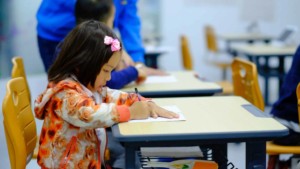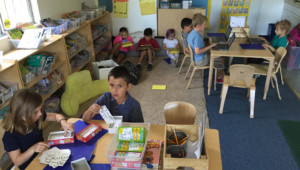3 Ways Teachers Can Unite Students Inside and Outside the Classroom

As a K-12 social studies teacher for a U.S.-based online private school, I communicate daily with students from around the world, from the U.S. to France to Brazil to Saudi Arabia. There is something truly wonderful about how technology enables us to bring our students together in an online classroom. However, establishing a common bond among the students and helping them to learn each other’s cultures is a challenge I face on a daily basis (and it’s an important one, given our globalizing world). Fortunately, I’ve discovered that most of my students are fascinated to learn about other parts of the world and I’ve discovered some effective ways to teach them how people live, communicate and think in vastly different parts of the world.
While my perspective comes from working as a virtual private school teacher, the following tips can be adapted and used by teachers in brick and mortar or other types of classroom environments.
- In an effort to allow my students an opportunity to tell the story of their culture in their own words, I launched our school’s “The iNaCA Traveler Podcast.” Each month, I interview one of our students, and their classmates can listen to the interview to learn about everything from food, music, movies, culture or even things that the student does for fun in their country. When students learn about their international classmates during class time, they become fascinated in learning more about the student’s life. I’m also working on launching a YouTube channel to supplement the podcast. When appropriate, I suggest that teachers take advantage of social media platforms to engage and connect students, ensuring that the channels remain positive and education focused.
- As a virtual school, we leverage the internet to offer clubs and activities for our students regardless of their location. Students can communicate through their webcam and microphone to enjoy similar interests like art, robotics and chess. For example, students from the United States can socialize with students from Australia by sharing their artwork and providing feedback to their peers. Beyond the technology platform we use at our school, we find that parents and students often set up Facebook groups to communicate with one another. Teachers from any type of education environment can facilitate conversations and encourage students to connect via Facebook group conversations, or even assign students to work together on group projects the digital way through platforms like Edmodo or Wikispaces.
- When I’m not teaching history, I’m traveling the world during school vacations. I translate my fascination for other cultures and geographies into the classroom, where I encourage open dialogue among students around the world. I am a huge supporter of open communication and I find it’s even more valuable when two people from completely different cultures and geographies can share their unique perspectives with each other. However, encouraging students to speak with each other can be accompanied by difficulties, especially for the students who tend to be shyer than others. One helpful solution is to pair students up with each other, so each student has a dedicated partner. Then, the teacher can provide a list of questions and/or discussion topics that the students have to each answer to each other. After this exercise, the teacher can ask students if they’d like to share with the whole class, or if they’d like to share what they learned about their partner with the class to make it less personal.
For social studies curriculum, there is no better way to help students become informed, worldly citizens than to first start by helping them understand the unique cultures represented within their own classroom or school.
Jason Agins is a high school social studies teacher at International Connections Academy. Follow Connections Academy on Twitter: @ConnectionsAcad.
For more, see:
- 3 Quick Tips and 40+ Resources for Globalizing Your Learner Experiences
- Designing Student Projects for Global Readiness
- Virtual and Augmented Reality in Personalized Learning
- How School Networks Work and Why That’s Important
- 5 Best Practices to Globalize Your School
Stay in-the-know with all things EdTech and innovations in learning by signing up to receive the weekly Smart Update. This post includes mentions of a Getting Smart partner. For a full list of partners, affiliate organizations and all other disclosures, please see our Partner page.





0 Comments
Leave a Comment
Your email address will not be published. All fields are required.